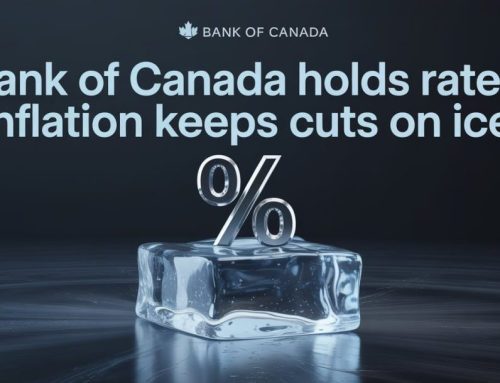With mortgage rates reaching new historical lows, pretty much everyone in a fixed rate mortgage is paying a much higher rate than what’s available in today’s market. With 5 year fixed mortgage rates now as low as 1.49%*, you may be wondering if it makes sense to make a move. Most people are drawn towards shiny low mortgage rates, however rate is not as important as the overall cost. Breaking a mortgage early will result in paying a penalty…which leads us to one question:
Will it be worth it to break my mortgage to take advantage of these ridiculously low mortgage rates?
Before we get into the fun stuff, let’s take a moment to talk about the not-so-fun stuff.
Mortgage Penalties
Anytime you break a closed mortgage before the end of the term, you’ll be faced with a penalty. The biggest problem that we’re encountering today is the size of the penalty on fixed rate mortgages. The penalty to break a variable rate mortgage is almost always three months interest (with the odd exception). Fixed mortgage rate penalties are not quite as easy to determine. Let me explain further.
Regardless of lender, the penalty to break a fixed rate mortgage is almost always the higher of three months interest or the interest rate differential (IRD). The interest rate differential is the difference between your mortgage rate, and the new rate that can be charged to re-lend out the funds. For example, if you break a mortgage at 2.99%, and today’s rate is 1.49%, then this represents a loss for the lender. The IRD compensates them for this loss. The larger the rate difference, the larger the penalty.
While the wording is the same among most mortgage lenders, the formula for calculating the IRD will change. The major banks use posted rates, then they subtract the original discount that was given to you, which is the harshest method resulting in the highest penalties. The better the deal you got from your bank, the higher your penalty.
The other method is using the lender’s standard mortgage rates. This is the method used by most of the non-bank lenders and is the most consumer friendly method for calculating the IRD penalty. Lenders like MCAP, XMC, CMLS, Merix, First National, etc, all fall into this category. They are known as ‘fair penalty lenders’.
Note that a fair penalty lender does not guarantee you a low penalty. It just means that the penalty will most often be lower than it would be with a harsher penalty lender. When the current mortgage rates fall significantly below your mortgage rate, you could be faced with a high penalty regardless of the lender type. This is the situation that many borrowers are encountering today.
Determining Your Penalty
While there are online calculators for determining your penalty, their accuracy can be questionable. The only way to be certain is by contacting your lender and asking them directly. Note that lenders can only quote your penalty as if you were breaking today, which means it’s subject to change. If rates remain stable, then it would be fairly accurate. If rates were to drop further from the time the penalty is quoted until the time your new mortgage closes, then this could result in a higher penalty than you were expecting. Should this be the case, you would not be obligated to proceed with the new mortgage.
Now that we’ve discussed penalties, it’s time for the fun stuff!
Will It Make Sense For You To Break Your Mortgage?
If you are currently in a variable rate of prime -0.65% (1.80%) or greater, or a fixed rate at 1.89% or greater, then it will be worth looking into. If you’re in a fixed rate mortgage and there is too big of a spread, then the penalty may make switching cost prohibitive. The numbers of course do the talking, and it always makes sense to at least look into it.
5 year fixed mortgage rates have now hit a new record low of 1.49%*. Variable rates have also dropped to as low as prime -1.00% (1.45%). Note that these rates do not apply to all situations. Overall, 5 year fixed rates range from 1.49% to 1.84%. 5 year variable rates ranging from 1.45% – 1.75%. As you can see, mortgage rates can vary depending on your situation, so please reach out to us to find out the lowest mortgage rate that you’re eligible for.
Regardless of what rate category you fall into, if you are currently in a fixed rate, then today’s rates are lower than what you are paying now, which means there is potential to save thousands. In order to determine if a mid-term switch will be financially beneficial, we would need you to provide us with the following information:
– Amount owing
– Maturity date (renewal date)
– Current rate
– Type of rate (fixed or variable)
– Current payment amount
– Payment frequency (Monthly, biweekly, etc)
– Penalty
– Current lender
– Original purchase date
– Approximate market value of your home
Also, please advise if you have a second component such as a HELOC attached to your mortgage.
With the above information, we can crunch the numbers to determine how much money you could potentially save, or if it would make the most sense to stay put in your current situation.
Bonafide Sale Clause
If you have a mortgage with a bonafide sale clause, then this would prevent you from transferring your mortgage to another lender. The only way you are able to break your mortgage would be by selling your home. If you are currently in MCAP’s Value Flex, CMLS Rate Advantage, or BMO’s Smart Fixed Mortgage, then you would have a bonafide sale clause. MCAP will still let you refinance with them, however the rate will be a fair bit higher. Depending on the penalty amount, it could still make sense to make a move.
Will Mortgage Rates Drop Further?
Even with mortgage rates hitting new historical lows, it’s possible that they could fall even further. This doesn’t necessarily mean that you should be waiting. While it’s great to have a lower rate, your goal should not be to lock in at the lowest rate possible. It should be to save the most amount of money. If you wait for rates to drop further, then this could drive up your penalty to a point where it would no longer make sense to switch. Many people switched to rates in the low 2% range at the end of 2019, and early in 2020. While it may seem as though these switches were done too early (knowing what we know today), waiting until rates dropped further would have resulted in higher penalties, therefore it may not have been beneficial to switch.
Will it make sense for you to switch to a lower rate? Shoot us an email or give us a call and we’d be happy to assess your situation for you!
*The lowest rates usually apply to insured mortgages, or those with 35% greater down payment or equity. Property value must be under $1 million OR property must have been purchased prior to November 30, 2016. For detailed information on this, I would suggest reading my blog on Why Different People Are Quoted Different Mortgage Rates








Thanks again for the post. Much thanks again. Really Great. Marty Waylin Maretz
Thank you, I’ve just been looking for info about this subject
for ages and yours is the best I have came upon till now.
But, what about the conclusion? Are you positive
in regards to the source?
thx
My Pleasure!
thx
You’re very welcome.
thx
You’re very welcome 🙂